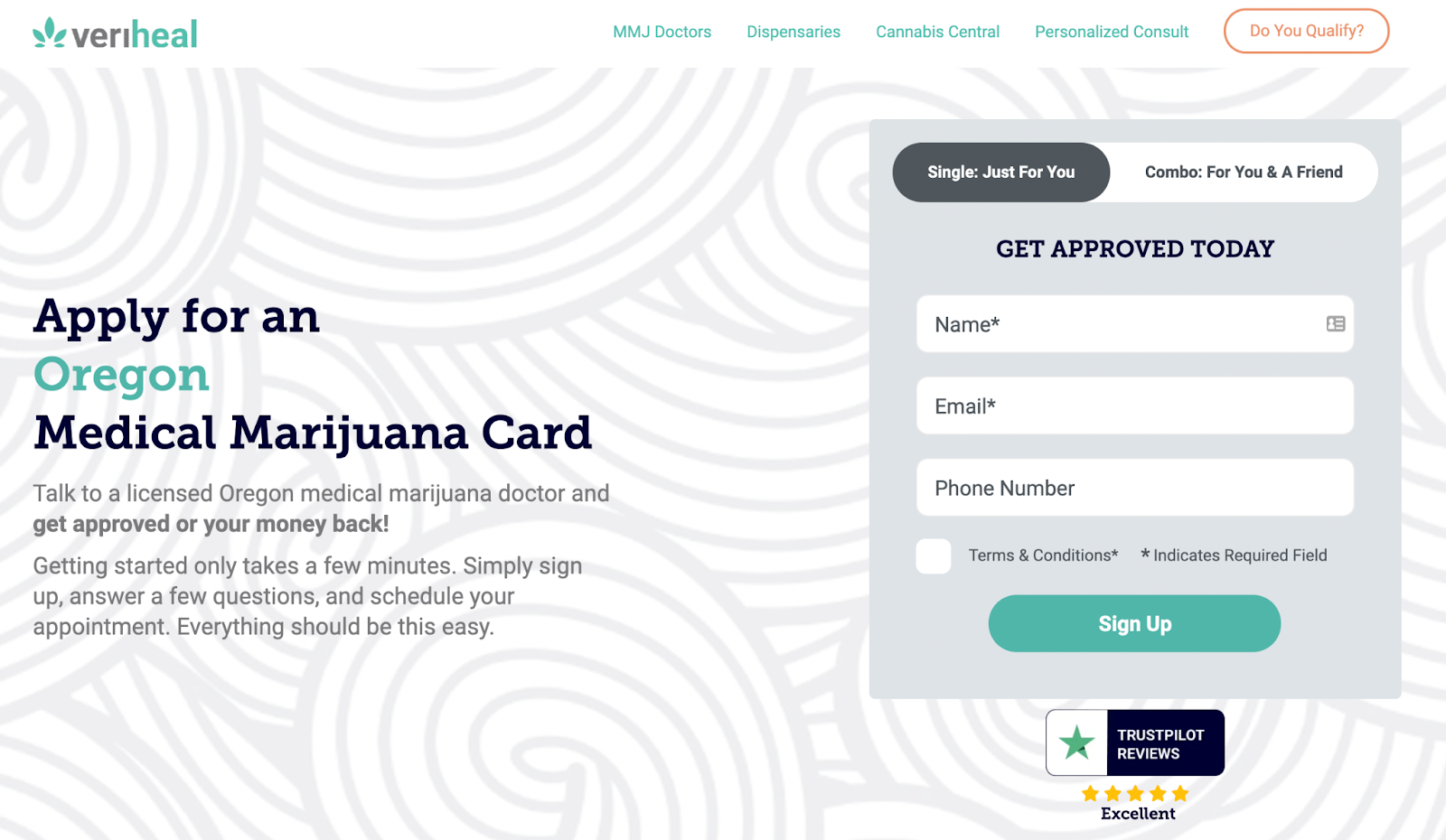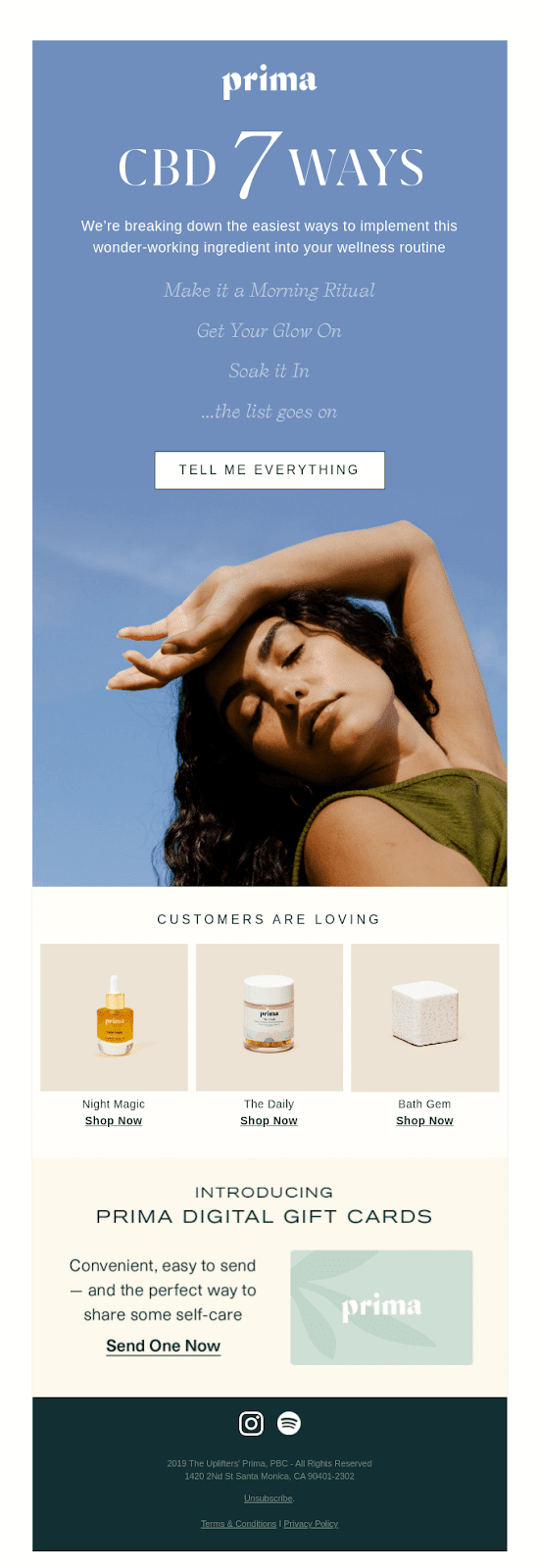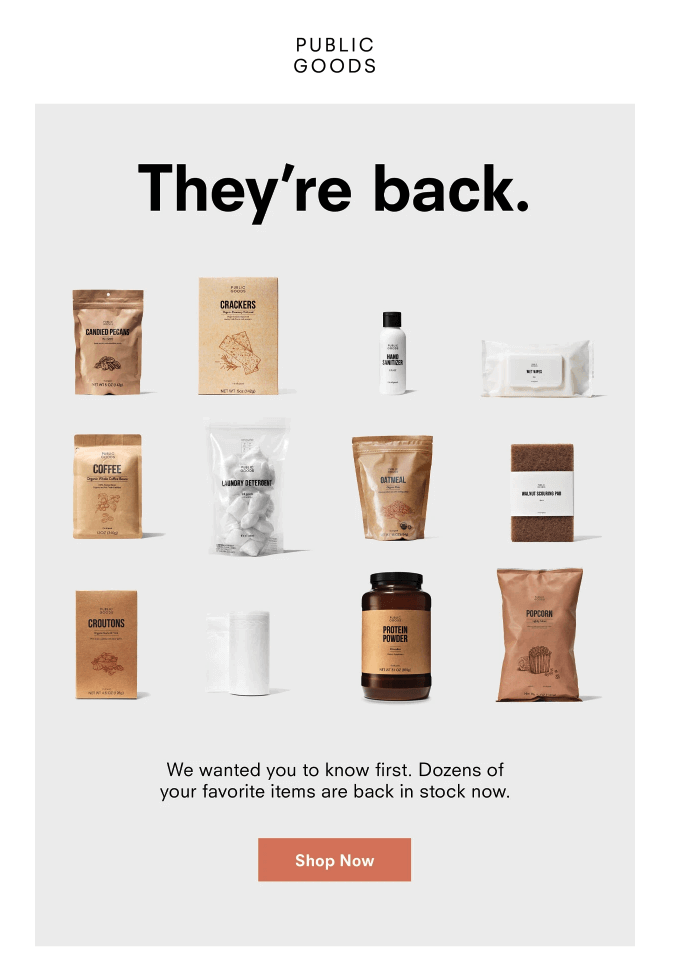Disclaimer: The information provided is for general informational purposes only. The contents do not constitute legal advice and are not intended to be a substitute for legal advice. We recommend you consult a lawyer if you want legal advice.
Across every industry, email marketing proves time and time again to be a main revenue driver — and that stands true for the cannabis industry as well.
But due to the nature of cannabis and the changing laws around it around the world, you can’t go about email marketing in this industry all willy nilly.
In this blog post, we’re going to cover how to keep your email marketing compliant with laws and regulations and some good email marketing tactics that help you grow your list and convert those leads into customers.
6 Unbreakable Methods for Building Your Cannabis Email Strategy
1. Pick the right email marketing tool
Another important piece to the puzzle for cannabis email marketing is picking the right email marketing tool.
As I’m sure you know, not every Email Service Provider (ESP) out there will work with cannabis brands.
We’re one of the few email marketing providers that don’t shy away from servicing cannabis brands. We will help you set up your email account to stay compliant, and many of our customers have experienced great results in switching to us.
Our customer, Veriheal, switched to using us as their ESP and started generating $50k-$80k per month with help from our team of email expert advice.

There are others like Santa Cruz Naturals that switched to us and saw a huge boost in open rates after doing so.
If you’re in the market for a new email marketing tool that works with cannabis brands, then Sendlane is here to help. You can click here to get started for free and chat with one of our email marketing experts about your email marketing goals.
//[inject:ad-demo]
2. Grow your email list organically and get consent
Let me just start by saying, yes, I know it can be tempting to go the route of buying an email list from someone who has one that seems packed full of your best buyers, but in this area, it’s not worth it.
There are so many drawbacks to it, not to mention it can seriously affect your email deliverability which is not an easy thing to dig yourself out of.
It’s really, really, REALLY not worth trying to cut corners that way.
So what should you be doing instead? Well, as mentioned before, you should do what you can with your marketing strategy to drive traffic to your site. After you manage to get people to your website, you should use opt-in forms to build up your list.

To start things off on the right foot so, here are a few suggestions to help you do just that:
- Ensure they’re 21 years of age or older. You can do this by placing a simple tick box on your form that states the subscriber agrees they’re of the correct age.
- Tag and segment subscribers based on state and countries. You can ask people to select where they live from a drop-down menu in the form. That way, when they enter their email, your email marketing platform can tag and then segment them into a list that matches the tag (i.e., The tag “California” would place someone in a segment named “California” if they said they lived in that state). State-to-state and country-to-country laws around cannabis change constantly; this segment will make sure you’re not sending them anything illegally.
- Use the double opt-in. I know, I know. We all hate that thing, but this will come in handy if you ever need to prove that you collected consent.
Aside from the first point, you don’t technically have to do these things to stay compliant, but doing them helps keep you ahead of the curve for when the issue of compliance arises.
You could put a little bit of extra time in now to do this right at go or spend hours and hours trying to fix things later if you don’t go about it this way.
It’s up to you, but foresight here can save you a headache later.
3. Create emails that provide honest help and guidance
Gaining trust with your email contact takes time, but that will all be undone with you using deceptive subject lines or poorly written email content.
Trust us, bait and switch has no place in any email marketing activity, but especially here. The modern cannabis user is generally well educated and tends to explore these products for other medical reasons such as anxiety or pain-related issues.
Emails that acknowledge these various desires educate ones about the difference of these, such as CBD vs. THC, and even how best to use them for first-time users are all ideas worth consideration depending on your audience preferences.

It’s helpful to know your audience to pick up on what those preferences are. To do that, you should implement using tags and segments and tracking their browsing and purchase history.
A few good segments to have are below:
- Location-based. We mentioned this one before, and this is great for compliance.
- Interest-based. Each email should allow you to create tags for links, CTAs, or images. A tag will be added to their profile and then segmented into a designated list depending on what they click on. Let’s say you wrote a blog post about the best cannabis strains for anxiety. You would tag the content, and your email marketing platform would tag contacts who engage with a tag like “anxiety” and segment them to a list labeled something like “Mental Health.”
- Age-based. Your forms can collect this info for you, but you should set a tag and create a segmented list that pools these people into a 21+ segment. That way, it shows you collected consent based on their age and adds that “21 and over” tag to their profile.

There are a bunch of other segments you could create as well. For a more detailed overview of various email marketing segments you can create, be sure to download our .
//[inject:ad-ebook-segmentation]
4. Use clear subject lines & put them to the test
Your subject line should be a clear summary of your message content. They give your subscribers insight into what your email will cover and ultimately guide them to decide if it’s worth opening or not.
While we advise you to use some caution here since CAN SPAM Act of 2003 prohibits deceptive subject lines, that doesn’t mean you can’t have strong subject lines that entice readers to open your email!
Honesty is the best policy. After all, honest brands are likable, which ultimately leads to more sales!
When it comes to subject lines, it is best to test, test, test! With a tool like Sendlane, you can leverage Experiments – multivariate testing to make sure you’re sending only the most engaging version of your email.
And you’ll be happy to know studies show that using words like “Hemp” or “CBD” doesn’t hurt your open rates or click rates.
5. Get a real website and use it as a sending domain
Having a comprehensive website and domain is a crucial part of your branding. A key piece of the pie to creating a strong sending reputation is using a branded sending domain when it comes to email.

Here are a few reasons why this is important:
- Your URL will also act as your sender domain. A few years back, email marketing rules changed and have continued to change over time. One change made was sending from a corporate email address rather than something like a Gmail.com account. When you build a real website, you can choose a URL that’s branded like Eaze.com or Nectar.store, for example. You then use your URL to create a sender email address like “[email protected].”
- You’re building a brand, and brands can build trust. Trust is a precious commodity in marketing. It seems like a small thing, but having a well-designed branded website and using that branded URL for your email helps layer in trust throughout the touchpoints you have with people.
- You’ll need legal pages on your website to stay compliant. Terms and Conditions, Privacy Policy pages are just a couple of the ones you’ll need. On your privacy policy page, you’ll have to list how you use and store customer data and how you comply with the Children’s Online Privacy Protection Act (COPPA). Having these pages on a website you own gives you the best control over the content you create, while using a free web-building service may hamper your ability to have these pages or stay compliant.
It may seem like an odd thing to talk about your website when it comes to email marketing, but these two things work together to bring in more business. By having a website that stays true to your branding, has legal pages, and offers support for content marketing options like a blog, you’re only helping yourself in the right direction.
6. Use a physical address
Last but definitely not least is this point.
You need to include a physical address for your business on your website and in your emails.

There are a few ways you can do this. Generally, the easiest would be to use the address of your physical store location, like Prima does in the example above. However, if you have a PO Box registered at the Post Office or if you use a place that lets you register a private mailbox, you can use that address as well.
Really, it’s up to personal preference, but it’s one of those laws thanks to the 2003 CAN-SPAM Act that none of us, no matter what industry we’re in, can skip.
3 Essential Email Marketing Campaigns for Cannabis Brands
Now that you know what to do to keep your emails in check, it’s time to start sending emails. And just like your marketing strategy, there is some strategy to use for your email marketing as well.
You can and should be using some important campaign types for cannabis brands. Below, we’ll review a few to help get your creative wheels rolling.
1. Informational Newsletter
You can consider these the run of the mill since they’re the ones you send out most often.

Many brands across various industries will use this email to send promotions out, which is good, but… you can do better. Since cannabis is an ever-evolving industry and a lot of people are new to the experience as a whole, taking the route of educational newsletter updates can be very beneficial.
We touched on this briefly earlier, but informative, helpful content is a great way to build trust and keep people opening your emails. If you’re not sure how to frame emails like this, here are a few ideas:
- Share updates about cannabis. Did a law change somewhere? Is there something new and exciting coming out in the industry? Talk about it. Ask people their opinions. Circle it back to social media to get people talking.
- Did you hear a great podcast that relates to cannabis products? Share it with your subscribers. Reach out to the podcaster and tell them you did that too. It doesn’t hurt to build a good report with people.
- Create and share “How to” guides. These can be guides regarding products that are broken down into various emails.
2. Referral or Loyalty Program Emails
Loyalty programs pull in more sales for just about every industry, including cannabis. These programs help increase purchase frequency and get customers to purchase a wider range of products.

Every loyalty program platform is a little different in what they offer you, how easy they make it for people to sign up, and the email automation that comes built-in.
Sometimes, the email automation is lacking, but if there is an integration for their platform that you connect to your email marketing account, you can bump that up a notch.
If you’re wondering what sort of email you can send with this campaign type, here are some ideas to get the ball rolling.
- Your welcome emails. Tuck an email into your current welcome sequence that tells people about your loyalty program. This drives more sign-ups which leads to more sales and so on.
- Automated “Thanks for signing up.” When someone signs up for your loyalty program, they should get a thank you email that includes account information and ways to earn more points. If referrals earn them points, make sure to clarify how they can refer friends and family.
- Loyalty points reminder emails. If your program earns them points, discounts, or anything else, be sure to automate reminders to check their account or to show them how many points they have. Many rewards program platforms have ways to create and automate these types of emails.
2. Replenishment Emails
This is sort of like signing up for an “Item is Back In Stock” sort of email. We know this isn’t a cannabis brand, but it’s a great example from Public Goods of a simple back-in-stock email that gets the job done.

Cannabis products can run out quickly, especially now with supply and demand issues most businesses are dealing with this past year. With a replenishment email, you can send out an item back in stock and urge people to buy it before it sells out again. Here are a few ways you can do that.
- Offer back-in-stock email notifications. When an item is restocked, you can send a designated email to everyone who signed up for that list.
- Send an email to a segmented list of previous buyers. Segmenting people by the products they purchase would be the first step. When you want to alert them about the product, you have a group of buyers to try to sell the products first.
- Use your newsletter. While it’s not the best method, if your item is very popular, you can use your promotional emails that go out every week to alert your list to an item being replenished.
Cannabis email marketing is ripe for business
The cannabis industry has done extremely well in the past couple of years. With more people working from home and spending more time on their screens, email marketing for cannabis brands is more important now than ever before.
It’s not too late to get started, and it’s easier to do than you may think. And with Sendlane, we’ve done a lot of the heavy lifting for you, including building a highly intuitive platform that doesn’t take long to master.
Source link



